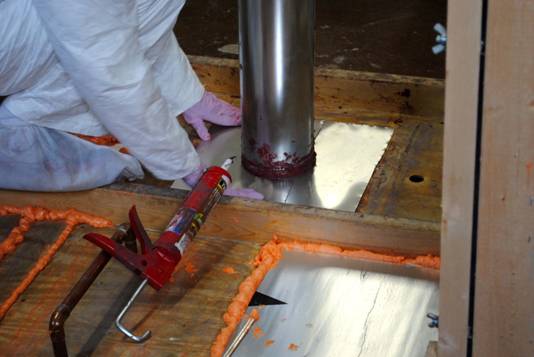R-Value + Air Sealing = Energy Efficiency
Mar, 22 2014 20:03

R-value is a big talking point these days. When people talk about energy efficiency, the first question that comes up is “What’s the R-value?”
What R-Value Means For Energy Efficiency
To put it simply, the R-value is a measure of how well an insulating material slows heat loss through the walls of a building. Eventually, all the heat we put into a building will end up leaving the building – much like how a cup of hot coffee will cool when it is left on a table. Buildings with higher R-values will lose heat more slowly, in the same way that coffee in a thermos will lose heat more slowly.
Energy Efficiency Is More Than Just The R-Value
There is more to heat transfer than R-values. It is only half of the equation – the other half is air sealing. So not just stopping the hot or cold air from leaving your house, but stopping the air outside from coming in. When a building isn’t well sealed, it will keep your furnace running full-tilt for longer than it should.
Holes In Your Wall = Holes In Your Wallet
The problem is that most buildings are full of holes! They’re in all kinds of places you might not think of – in the bathroom under the toilet or tub, where holes were cut to put in piping. There are holes in your drywall where the electrician punched a hole to put in the wiring for your chandelier. There is air leaking through the cracks between the plywood strips that form the outside of your home. And there is almost always air lost around recessed lighting. Air lost through leaks can increase your heating and cooling bills by up to 40%
Seal It For Energy Efficiency
The good news is that that there is a simple way to make your home more airtight and more energy efficient – seal it!
Start With A Home Energy Audit
A home energy audit can help you figure out exactly where the most pressing air leaks are, and will make recommendations for what you can do to help seal the leaks in the most efficient and cost-effective way to help you start saving money now.
But keep in mind that with making your home air-tight, you run the risk of having the air inside your home become stale and polluted. What can be done?
Ventilation Maximizes Comfort and Efficiency
The solution is to bring in fresh-air ventilation. This means controlling the air flow into and out of your home to maximize energy efficiency while keeping the air in your home fresh and clean.
Solve Both Problems To Save Money And Maximize Energy Efficiency
There are lots of ways that your home is losing heat. A higher R-value solves the conduction problem, while air sealing will help minimize heat lost with moving air. Both are important for energy efficiency.
To find out about how much heat you’re losing in your home, and how you can fix the problem to save money, contact your local Building Energy Pros affiliate or Building Energy Pros headquarters at 1-800-309-6006 or www.buildingenergypros.com
